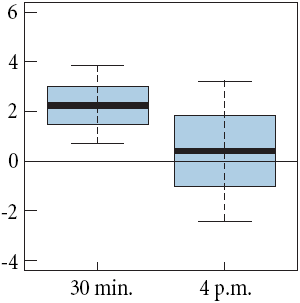Which of those morning economic data releases really move markets? In their August 2008 paper entitled “How Economic News Moves Markets”, Leonardo Bartolini, Linda Goldberg and Adam Sacarny explore how surprises in economic data releases affect asset prices in the stock, bond and currency exchange markets. They consider the following releases: (1) nonfarm payrolls and unemployment rate; (2) consumer price index (CPI) and CPI excluding food and energy; (3) personal consumption expenditures excluding food and energy, personal income and personal spending;(4), gross domestic product (GDP) advance; (5) Institute of Supply Management (ISM) manufacturing: (6) housing starts; (7), Conference Board Consumer Confidence Index; (8) University of Michigan Survey of Consumers; and, (9) retail sales less autos. They quantify “surprise” as the difference between the announced value for an indicator and value previously expected by key market participants. Using economic data releases and contemporaneous intraday asset and futures prices for the period January 1998 to July 2007, they conclude that:
- Only surprises in nonfarm payrolls, GDP advance and ISM manufacturing releases generate economically significant and persistent asset price responses. Surprises in other data typically have small and transitory impacts.
- In general, economic data surprises have the most impact on interest rates, a lesser impact on currency exchange rates and the least impact on equity prices.
- The immediate impact of economic news on asset prices tends to be more pronounced than the full-day impact (see the chart below).
The following chart, taken from the paper, shows the percentage change in the S&P 500 index to a large positive “surprise” in nonfarm payrolls on the announcement date 30 minutes after the market opens and at the market close. The heavy central line in each box shows the estimated response to the surprise. The boxes indicate one-standard error confidence intervals, and the error bars indicate two-standard error confidence intervals.
Other charts in the paper provide comparable results for Treasury yields and currency exchange rates.

In summary, the nonfarm payroll, GDP advance and ISM manufacturing data releases move markets the most, affecting interest rates and currency exchange rates more than stocks. Impacts are most pronounced immediately after release.